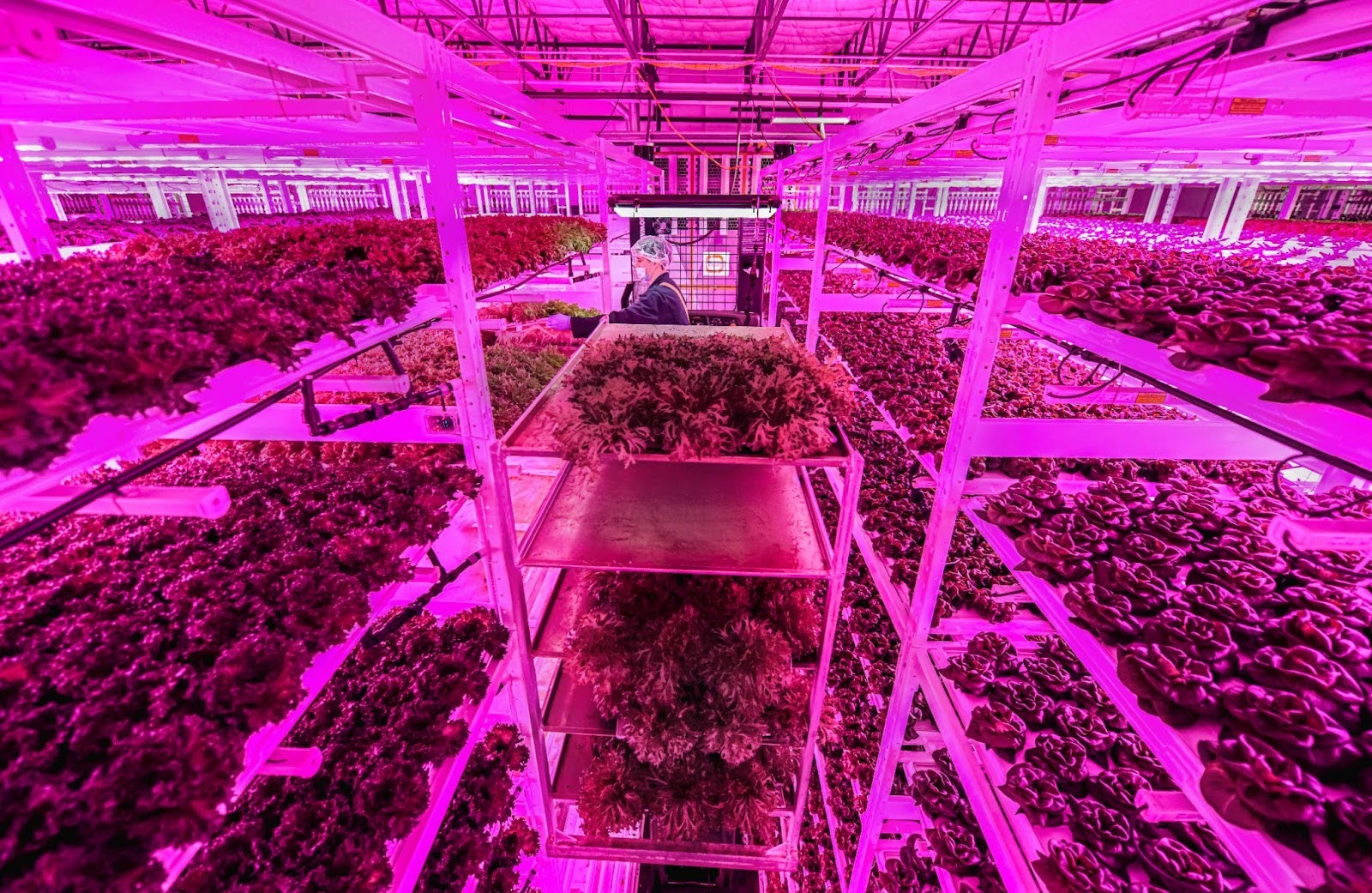Optimize Crop Yields with Greenhouses and Vertical Farming Systems
Insights on vertical farming - October 8th 2025

How do farmers expect to meet steadily increasing demand for produce amid worsening arable land scarcity and worldwide food insecurity brought on by climate change?
Greenhouses chart a clear path forward. With the right design, they cut to the heart of the problem by allowing traditional farmers to grow smarter and more capably, minimizing common risks associated with open-field agriculture and maximizing return on investment with bigger and more-reliable harvests.
Let’s break down the advantages of greenhouse growing versus traditional.
Grow longer
The greatest advantage to greenhouses is the same as other methods of controlled-environment agriculture (CEA): when you farm indoors, you aren’t beholden to the calendar or the weather forecast. In fact, many greenhouses employ supplemental lighting to grow through the night or account for changes to sunlight season to season. And with the right preparations, they will also protect crops during inclement weather.
Of course, year-round growing can easily lead to higher overall production, but how high those numbers go depends on how well growers lean into their newfound control over crop production by targeting quality and consistency.
Grow safer
As traditional farms depend more and more on water reclamation, for sustainability or simply better resource management, they expose themselves to whatever pathogens, chemicals, animal or human waste leach into the water through soil and casual contact with farmhands and equipment.
While this concern doesn’t disappear when farming moves indoors, it is greatly reduced. CEA facilities like greenhouses incorporate soilless substrates, closed-loop irrigation systems, and monitoring tech to limit contamination and build in rigorous contingencies should contamination occur.
Grow smarter
Greenhouses will already protect crops better than open-field agriculture can, but truly excellent greenhouse growing goes beyond recapturing losses.
So long as greenhouses sport the proper cladding for natural light transmission and diffusion, thermal exchange, and resistance to the elements, their farmers can experiment with the environment just like they would in a standard indoor farm: CO2 injection, different nutrients in its irrigation system, or even light recipes.
Greenhouses and CEA change the frontier of agriculture to a laboratory where crops grow stronger and more plentiful.
Greenhouses for indoor farmers
Greenhouses can also be a great way for indoor farmers to supplement their production.
Greenhouses are faster and less expensive to build from scratch than a full commercial indoor farm, not to mention the long-term affordability of letting natural sunlight offset electrical costs from around-the-clock lighting, and growers can also expect to maintain all the benefits of indoor CEA, such as wider control over crop growth and security, advanced monitoring, and resource management.
Grow More
A Growing Advantage, Rooted in Smart Design
At the heart of every successful greenhouse is a system designed to do more than just hold plants — it must support smarter growing, season after season. Whether you’re scaling from indoor production or starting fresh with climate-resilient infrastructure, commercial greenhouses offer flexibility, security, and performance.
And that’s where Montel shines.
With decades of experience in space optimization and vertical farming innovation, Montel systems help you grow more — in less space, with greater control, and stronger returns..From maximizing cubic footage to integrating seamlessly with your environment — including lighting, irrigation, and monitoring systems — Montel’s vertical grow racks are designed to support every layer of your production ecosystem.
But before you expand your indoor farm with commercial greenhouses, or before you break ground on any greenhouse project, be sure to contact us.
Every free consultation with our vertical grow rack experts includes 2D and 3D renders of layouts and ROI projections to help you get the most out of every cubic foot and start your greenhouse on the right track.
Q&A: Key Takeaways from the Article
Q: Why are greenhouses better than open-field farming?
A: Greenhouses extend the growing season, protect crops from weather, and offer greater control over temperature, light, and water — increasing yield and consistency.
Q: What makes greenhouse farming safer?
A: Unlike open fields, greenhouses use closed-loop irrigation and soilless media, which reduces contamination risks and improves traceability and hygiene.
Q: Can greenhouses match the performance of indoor farms?
A: Yes. With the right cladding, lighting, and CO₂ control, greenhouses can achieve similar controlled-environment performance — often at a lower cost.
Q: How does Montel help optimize greenhouse production?
A: Montel’s vertical grow rack systems help maximize every cubic foot, integrate seamlessly with irrigation and monitoring systems, and improve operational efficiency. Every consultation includes custom layouts and ROI projections.
Ready to Grow More?
Before you expand your indoor farm or break ground on your greenhouse, contact us today!





